This is an extensive compilation of confidential police bulletins (Meldeblätter / Meldeblatt) issued by the Kriminalpolizeileitstelle Königsberg (Pr) (Criminal Police Headquarters Königsberg, Prussia) for 1942.
The reports also incorporate records from Białystok and Zichenau (areas under Nazi occupation during WWII), reflecting the extensive security monitoring and criminal investigations in the occupied territories.
The file runs to over 1100 pages, featuring repeated formatted reports structured into various categories.
This document serves as a massive running log of police intelligence and criminal incidents from mid to late 1942, focused on:
-
Homicides and violent altercations,
-
Thefts (from livestock to bicycles to household goods),
-
Monitoring fugitives, escaped forced laborers and prisoners,
-
Orders on intensified investigations,
-
And preventive security concerns.
It is a historical primary source reflecting occupational policing, control of local populations, and criminal activity reporting in WWII-era Nazi-administered territories.
Disclaimer
This document is a historical archival record from the period of Nazi occupation in Eastern Europe during World War II. It contains content, terminology, and official administrative directives that reflect the racial, discriminatory, and violent ideologies of the Nazi regime.
- Language & Content:
The text includes racist classifications, derogatory terms, and policies that targeted specific ethnic and social groups (including Jews, Roma/Sinti, Poles, and others) for persecution. Such language and concepts are deeply offensive and contrary to contemporary values of human dignity and equality. - Purpose of preservation:
This document is preserved purely for historical, educational, and research purposes. It serves as critical evidence of the bureaucratic machinery of repression and the day-to-day operations of occupation forces. - Ethical context:
Nothing in this document or its archival description should be construed as endorsing the viewpoints, actions, or terminology contained within it. It stands as a stark reminder of the dangers of state-sponsored racism and totalitarian control.
Condition Note
Paper Texture & Degradation
-
Aged, yellowed paper is consistent across most pages — typical of 1940s wartime documents.
-
Visible foxing (brown speckles) and darkening along the edges suggest natural acid-based paper aging.
-
Minor creases, corner folds, and hole-punch marks are visible in several pages, especially near the spines (indicating storage in binders or files).
-
Some pages have visible bleed-through, likely from carbon-copy duplicates.
🖋️ Typography and Print Quality
-
All text is typed in German typewriter fonts, with mono-spaced letters and slight ink inconsistencies.
-
Faint or smudged characters appear intermittently due to ribbon wear or misalignment in typing — typical of wartime administrative offices.
-
Some lines show overtyping or ghost text from re-used pages or misfeeds.
-
Clarity
-
Overall text is legible and uniform, though some areas suffer from:
-
Faded ink on certain pages (especially around the 900–1000 mark).
-
Occasional low-contrast segments due to document wear
-
OCR works well on most pages but struggles with:
-
German umlauts (ä, ö, ü) and sharp “ß”
-
Old-style “Fraktur” headers (occasionally used)
-
Tables of stolen bicycles and livestock, where type alignment is uneven
-
-
-
This file is a well-preserved, legible, and historically rich digital archive, with moderate physical aging and minor OCR interference. Its visual condition is authentically archival, enhancing its credibility and appeal for historians, researchers, and collectors.

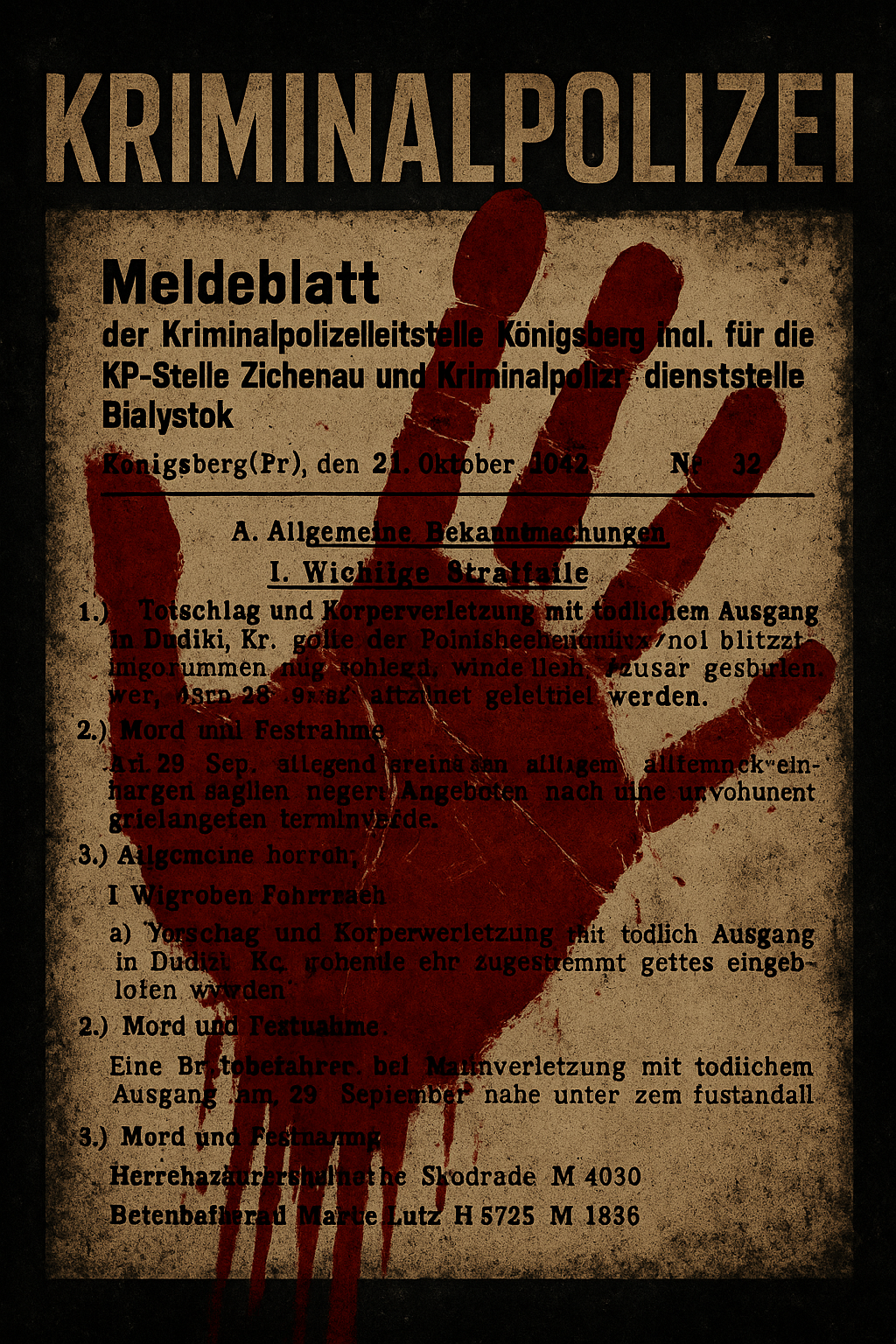
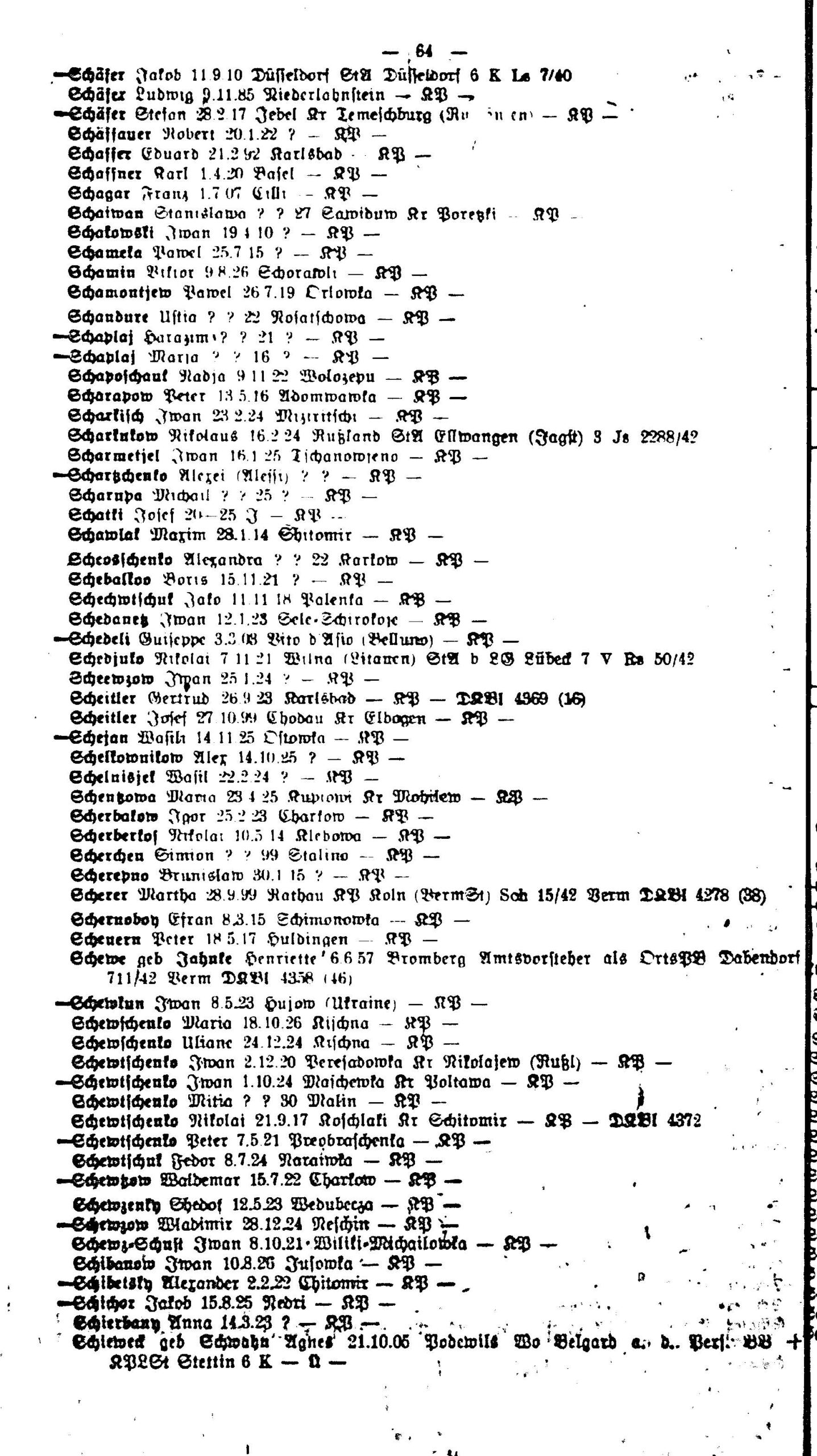
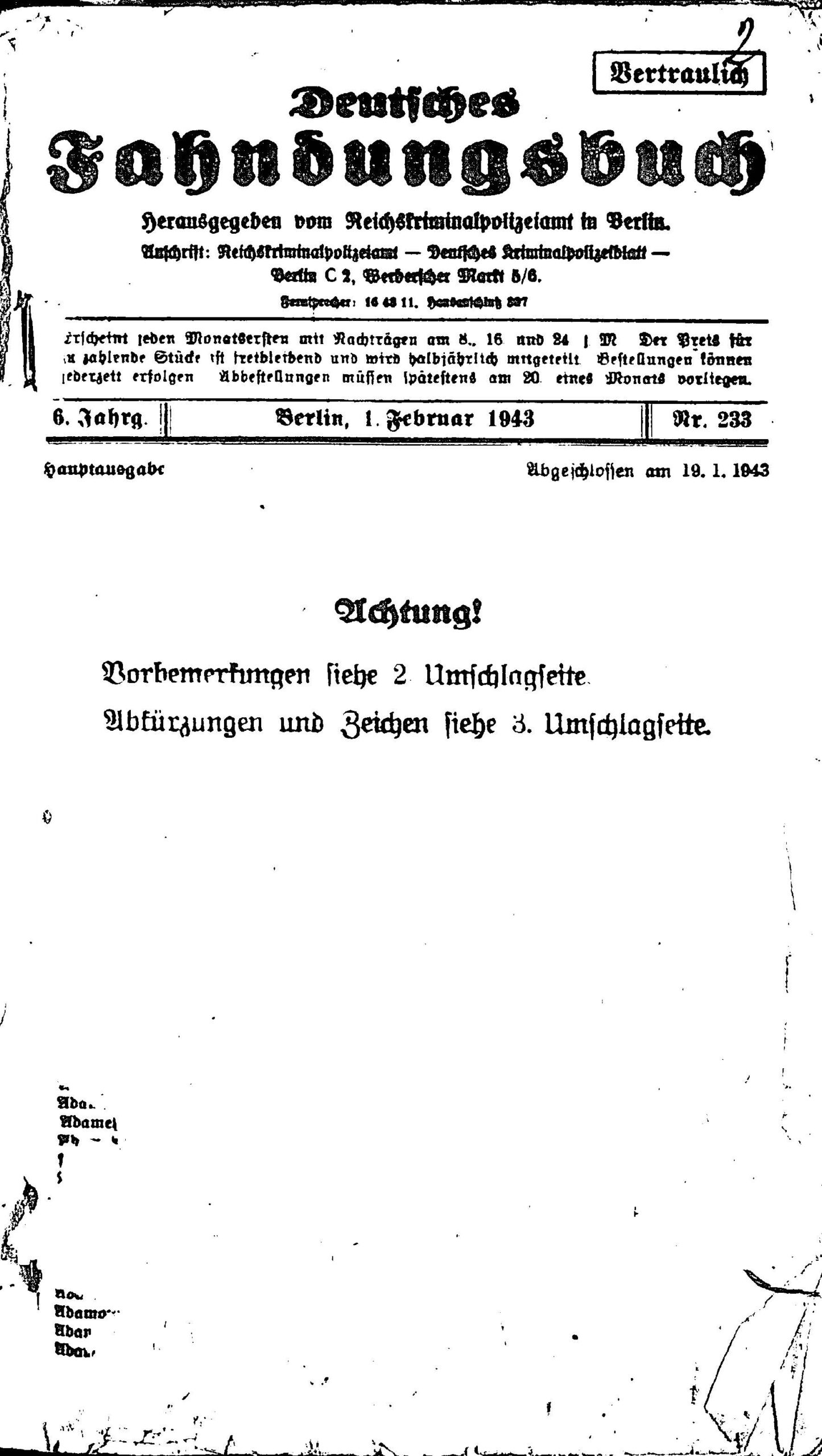

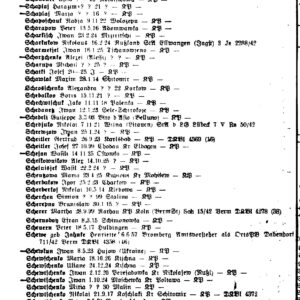
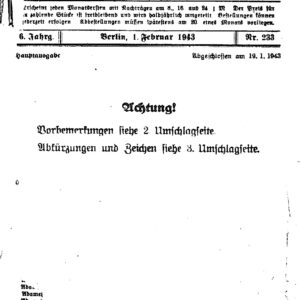
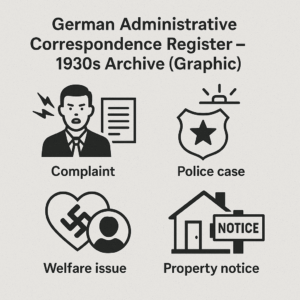

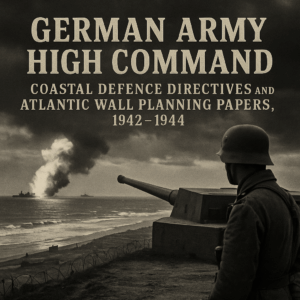
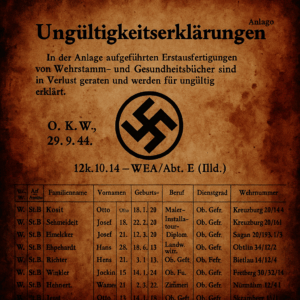
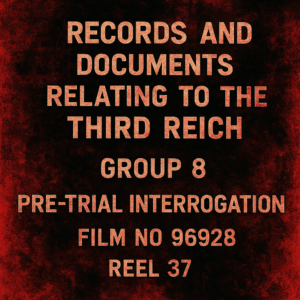

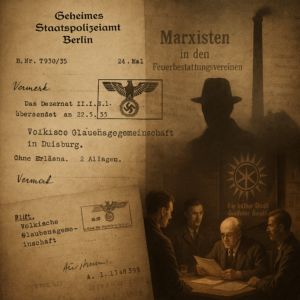
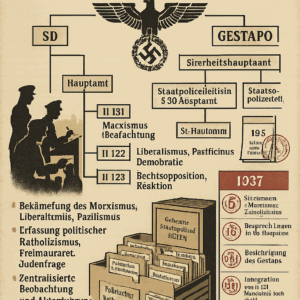
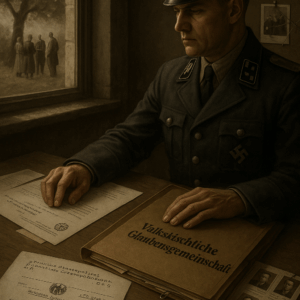
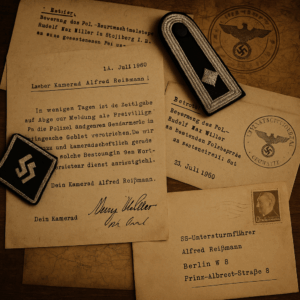
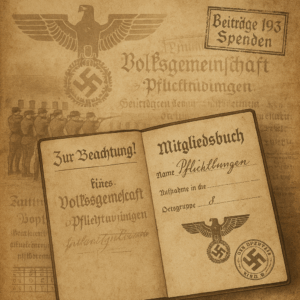
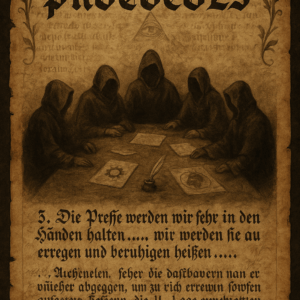

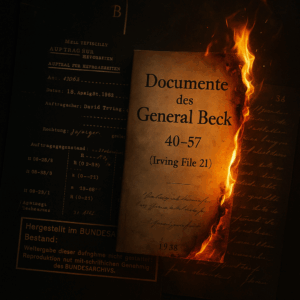

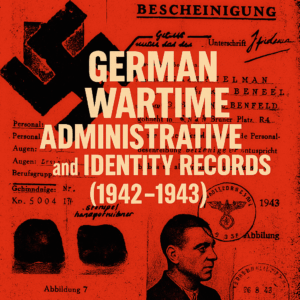
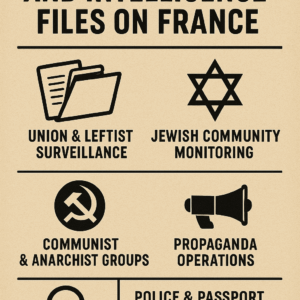
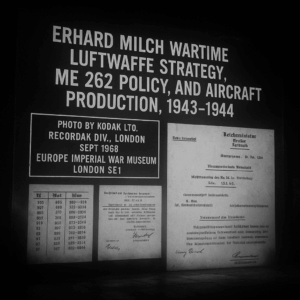
Reviews
There are no reviews yet.